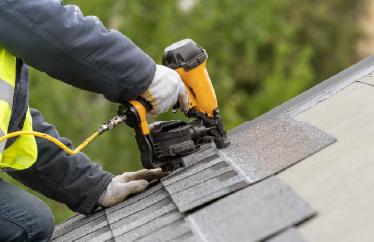Time to Clean the Fireplace… Again!

It’s that time of the year again when you need to start preparing for winter. Is summer already over? Seasons shift quickly and as autumn sets in, indeed, it is time to make early preparations for the colder months ahead. Outside of cleaning your rain gutters and making sure your water pipes are insulated for the winter, a clean, free-burning fireplace is a necessity before the snow or rains begin to fall.
Many of us use a fireplace within the home for heat and comfort throughout the fall and winter months. Before you light that first match on the wood and kindling, take care to ensure your fireplace is ready for another season of use. The National Fire Protection Agency (NFPA) suggests we inspect our fireplace and chimneys at least once a year.
Don’t light that match just yet, let’s review what you need to do to properly inspect and clean the fireplace.
Don’t light that match just yet, let’s review what you need to do to properly inspect and clean the fireplace.CLICK TO TWEET
How to clean the fireplace
While the infrastructure of the fireplace is more than the hearth, where we see the fire burning, we need to make sure the area in which we burn the wood is ready for another winter. When you burn wood you accumulate soot, ash, and creosote which is combustible and can make your fireplace unsafe which is why it must be cleaned.
- Preparation: Lay a plastic tarp or old sheet around the outside of the fireplace to protect the surrounding floor or carpet. This will also make clean up much easier. It’s also smart to wear gloves, a dust mask, and protective goggles when cleaning up potentially harmful materials. You may also want some padding for your knees.
- Remove the grate: Pull the andirons or grate away from your fireplace and take them to an area outside where they can be cleaned. Using a nylon brush, scrub the soot and ash from the metal using a few teaspoons of dish detergent on a soaked scrub brush, rinse thoroughly with water and wipe dry. If you like a nice shine, apply a metal polish.
- Remove ashes: Back at your fireplace, remove the ash pile. If you have any coffee grounds you can spread those out among the ashes to avoid breathing in airborne ash and dust. Use a sweep and dustpan or fireplace shovel and place the ashes in a trash can. You can use a vacuum hose to remove any excess dust.
- Get to scrubbing: Place newspaper in the base of the fireplace to catch falling ash and soot. Again, using a nylon brush, begin scrubbing the walls of the fireplace. Brush from the top of the wall down. Collect the newspaper and any fallen soot and dispose in the trash. As a cleaning solution, you can combine dishwashing liquid, Borax, Ammonia, or Trisodium Phosphate (TSP) with water. For the dishwashing solution, combine ½ cup detergent and 4 cups of hot water and fill up a spray bottle. Spray the inside of the fireplace thoroughly and let sit for 5 to 10 minutes. Scrub, scrub, scrub! Spray any remaining sooty areas with the solution and rinse repeatedly, as necessary. Make sure all the solution has been removed. After you reinstall your grate, you’re all set!
How to clean the chimney
The NFPA states that the majority of house fires are caused by home heating appliances and of those, most are due to chimney fires. The NFPA also suggests Creosote that builds up inside the chimney and on chimney liners is extremely flammable and can ignite, resulting in a fire within the chimney itself which can damage property, destroy a home, cause injuries or even death. According to the Chimney Safety Institute of America there are nearly 25,000 house fires due to improper chimney care a year.
Get your chimney inspected and cleaned by a licensed professional annually. This will ensure the chimney is in proper working order, safe for use, and functioning properly. A chimney inspection will look to clean the following build ups:
- Creosote: As discussed, this combustible substance begins as smoke and vapors from burning wood and collects a hard and flaky residue. When it builds up in the venting system it can catch fire
- Soot: Typically mixed in with ash ash, soot is a brownish or black powder and is made up of carbon. Carbon is also extremely flammable and can combust when too much of it has collected. If creosote or soot builds up to a ¼ inch or more, a cleaning should be performed.
- Glaze: This is a thick and tar like substance that appears shiny. Glaze can be one of the most difficult materials to clean from your chimney. Heavy collections of glaze can even drip down from inside your chimney like candle wax. Because glaze is so dense, if it does catch fire, it can burn for a much longer time than creosote or soot.
- Cleaning: There are two general methods of cleaning. A Standard Cleaning uses brushes, vacuums, and cameras to clean out and inspect the chimney simultaneously. Standard Cleaning is sufficient to clean out soot and creosote. A more heavy-duty approach is Mechanical Cleaning that incorporates cables, chains, and wire brushes cranked by a motor for deep cleaning and removal of glaze and creosote.
- Detection: Have your smoke detectors installed and be sure they’re working. Also, install Carbon Monoxide Detectors as CO is odorless and a major concern when burning fires in the house, even from a well inspected and cleaned fireplace.
Before the first burn of the season
Make sure your chimney cap is firmly attached and working properly. The cap should be screened so birds can’t nest, and rodents can’t get into your chimney. Check your fireplace damper and make sure nothing is preventing the damper from opening or closing.
With a well inspected and cleaned fireplace and chimney, you’ll safely keep yourself and your family warm in front of the hearth throughout the fall and winter!
Still have questions about inspecting and cleaning the fireplace, or how often household fires occur? Contact a Hippo specialist. We’re here to help!



